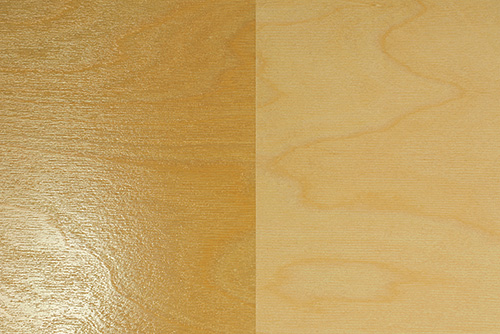
How do you duplicate that “blonde mahogany” finish that was so popular in the 1950s?
Michael Dresdner: That’s known as a toner finish, and was quite popular in those days. It works best on large pore woods like mahogany or korina. First, a lacquer toner made with very little binder and a lot of pigment was sprayed in a very thin coat onto open pore wood. That made the wood all one color, usually off-white, but allowed all the wood grain to show. Next, the piece was glazed, usually with raw umber or burnt umber glaze, which was flooded on and wiped off completely. The glaze lodged in the pores, accentuating them, and adding a bit more color along with contrast. Once the color was right, and dry, several coats of clear lacquer were applied on top.





